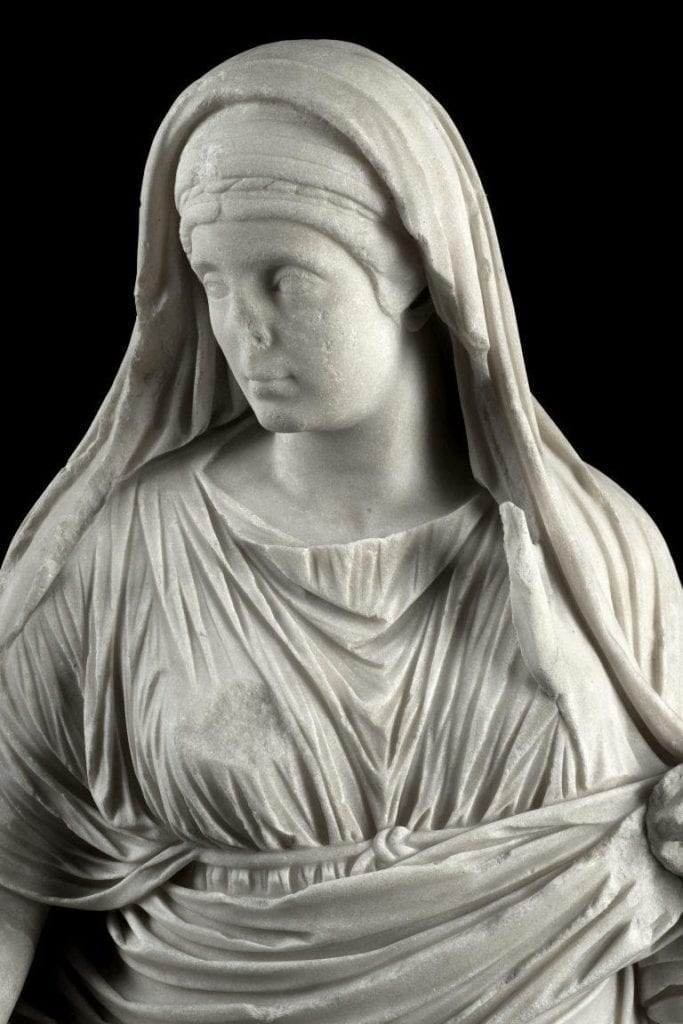Rome in-depth
Rome in-depth
Rome – In-depth
Pallanteo
According to tradition, after leaving Greece Evandro, the greek king of the Arcadi, son of the god Mercury and the nymph Carmenta, arrived on the coast of Lazio and founded the village of Pallanteo (recalling his city of origin “Pallantio”) on a hill which then took the name of Palatine.
By virtue of an old acquaintance between Evander and Aeneas’ father, Anchises, the king granted the Trojans his alliance in the war against the Rutuli and sent his son Pallas to war, who died fighting: this event marked the complete end of the dynasty, leaving no trace other than the name of the hill.
The memory of Evandro in the Roman tradition was so deeply rooted that it determined, according to Dionysius of Halicarnassus, the building of an altar in his honor under the Aventine hill. In the Aeneid, finally, it is stated that the cave in which the twins Romulus and Remus were subsequently breastfed by the she-wolf – the Lupercale – was originally a place of worship dedicated to the god Pan “Liceo”, a deity from Arcadia, assimilated to the Italic god Faun Luperco.
scalae caci
The so-called “Scalae Caci” – or the “Scale of Cacus” – was a passage on the south-western flank of the Palatine that Virgil tells of having been crossed by Aeneas together with King Evandro. Although the preserved archaeological remains refer to the Republican era, it is believed that this staircase has ancient origins, considering both its proximity to the village of huts of the eighth century B.C. and the fact that it is remembered by Plutarch when he describes the location of the hut of Romulus (Vite Parallele, Romulus, 20).
cacus
Cacus was a monstrous giant who lived in a cave on the Aventine hill. He would come into contact with Hercules during his tenth effort, which foresaw the theft of the oxen of the giant Geryon and their transport to Argos. During a stop of the hero near the Aventine, Cacus would in turn steal part of the cattle dragging the animals by the tail, so that it was not possible to follow the footprints up to the cave, being oriented in the opposite direction.
Hercules, however, hearing the mooing of one of the animals, identified the hiding place and strangled the monster.
Maximum Altar of Hercules
The Maximum Altar of Hercules is the oldest place of worship in Rome dedicated to Hercules. According to the myth, this altar was erected by Evander at the place where Hercules strangled the monstrous Cacus.
Remains of this structure have been recognized in the area known as the Foro Boario, because it is destined to the cattle market. Although the existence of the altar is already hypothesized in the archaic age, the first evidence of its construction dates back to 495 BC.
The monument has some parts of the podium in tufa blocks inside the Basilica of Santa Maria in Cosmedin, built from the sixth century AD.
Temple of Magna Mater
The Temple of Magna Mater (that is, of the “Great Mother”, as the Romans called the goddess Cybele), is situated on the Palatine hill. Cybele was a deity venerated in Asia Minor, but his cult was introduced to Rome in 204 BC, during the Second Punic War. In a moment of difficulty, the Romans brought to the city its symbol, coming from Pessinunte: a black conical stone, probably a meteorite.
The “Great Mother Idaea” was the goddess of Mount Ida, the mountain of Troy where Aeneas was born from the union between Venus and Anchises. For this reason the goddess was never considered a foreign deity, but rather an ancestral and salvific goddess settled exactly where Romulo’s hut was and where the city was founded.
The choice of hosting a “foreign” deity within the line of the pomerium – the sacred boundary that surrounded Rome – was justified by the provenance of Cybele from the Troad, that is, from the native land of Aeneas, the progenitor of the Romans.
The temple was dedicated in April 191 B.C. The building underwent a first reconstruction in 111 B.C. and a second during the empire of Augustus, but currently only the base is preserved. Among the relevant finds are the statue of the goddess and the dedicatory inscription of the temple.
Temple of Vesta
The Temple of Vesta, according to tradition, was commissioned by Numa Pompilius, the second king of Rome.
A fundamental element of the cult was the sacred fire of Vesta, the patron goddess of the domestic hearths, located in the center of the building and kept permanently lit by a special order of priestesses: the Vestals.
The fire of Vesta was originally meant to be the hearth of the king’s home, but over the centuries it became the beating heart of all of Rome.
It seems that during the reconstruction after the fire of 210 B.C. the podium of the building was equipped with a cavity – the Penus Vestae, accessible only to priestesses – a collection area of all the sacred objects connected to the history of Rome, including the statue of Athena that Aeneas would have brought with him from Troy: the “Palladium”.
The Penus, moreover, was the place dedicated to the tutelary deities of the State – the public Penates – here celebrated as a deep and intimate symbol of Rome.
ship
In his work dedicated to the Gothic War, Procopius of Caesarea, a historian who lived in the sixth century AD, says he saw, kept inside a building located in the center of the city, near the banks of the Tiber, a ship, which was considered the boat with which Enea arrived on the coast of Lazio.
Although the structure is not known from the archaeological point of view, its reproduction could be found in two plants of Rome, dating back to the Augustan and Severian ages, in which is represented part of a colonnaded building of elongated shape. Since the building appears in the plan of the Augustan age, it is possible that the ship was monumentalized during the Principality of Augustus, even if its preservation could date even from the fourth century BC, concurrentely to the creation of the “tomb of Aeneas” in Lavinium.
Forum of Caesar
The Forum of Caesar is the oldest of the Imperial Forums, five public areas built mainly during the Empire. The complex looks like a rectangular square, surrounded by arcades on three sides and closed, to the north-east, by the Temple of Venus “Genitrice”.
The other structures inside the square consist of shops (tabernae), a public bathroom (latrine) and the Curia Iulia : the meeting place of the Senate, built by Caesar to replace the previous one, destroyed by a fire in 52 B.C.
The construction of the Forum of Caesar began around 51 B.C. but, despite its inauguration in 46 B.C., the works were completed during the principality of Augustus.
An important building work was also carried out at the time of Trajan, who rebuilt the temple and built a new structure: the Basilica Argentaria, probably a place that housed the money changers (the argentarii). The presence in the building of graffiti that report verses of the Aeneid has also suggested its use as a school where the poem was already studied.
forum
The Forum of Augustus is a public area created by the first emperor to celebrate his membership in the Gens Iulia and the attainment of power.
The complex consists of a rectangular square delimited, on the long sides, by two colonnaded arcades ending with two semicircular exedras. The short eastern side, on the other hand, is occupied by the Temple of Mars “Ultore” (that is “Avenger”), which recalls the victory of Philippi in 42 BC, by which Augustus succeeded in avenging the murder of Julius Caesar, his adoptive father. The dedication to Mars, god of war, recalled not only the clash, but also the paternity of the god of Romulus and Remus, from whom Caesar and Augustus descended.
The exedra of the northern portico housed a statue of Aeneas fleeing from Troy, with his father Anchises and his son Ascanius. Around it were depicted the kings of Alba Longa and the most important members of the Gens Iulia.
In the exedra of the South Portico was placed, instead, a statue of Romulus, founder of Rome and successor of the Trojan race, surrounded by the statues of the great men (the summi viri) who had made the city glorious over the centuries.
The Forum was completed in 2 B.C. and remained in use at least until the sixth century A.D.
Ara Pacis Augustae
The Ara Pacis Augustae is an altar dedicated to the divine personification of Peace. The structure was commissioned by the Senate in 13 B.C. to celebrate the expeditions of Emperor Augustus to Spain and Gaul, and was completed in 9 B.C.
The complex consists of an almost square enclosure, with two entrances, which houses the altar in the center. The structure has a rich sculptural decorative apparatus, aimed to acclaim Augustus for having led Rome to a period of prosperity and peace after a bloody civil war.
The dynasty of Augustus is represented on the two long sides of the altar, during a sacrificial procession.
On the short sides, however, are evoked some scenes related to Rome and its myths.
To the west, on both sides of the entrance, is depicted Aeneas who sacrifices the sow of Lavinium in honor of the Penati on one side, while on the other there are Romulus and Remus breastfed by the wolf in the presence of the shepherd Faustolo and the god Mars.
On the East side, instead, on the sides of the secondary entrance, is represented on the one hand the personification of Rome, sitting on a pile of weapons; on the other there is a female figure, interpreted as Venus “Genitrice” or as the personification of the goddess Tellus.
Temple of Venus and Rome
The Temple of Venus and Rome is dedicated to “Propitious Venus” and to the divine personification of Rome, celebrated as “Eternal”. The association of these two figures is due to the fact that Venus, mother of Aeneas and inspirer of his journey to Lazio, would promote the foundation of the city.
The temple is located on the Velia hill, bordering the Roman Forum, and it was built by the Emperor Hadrian between 121 A.D. and 135 A.D. The works were completed under the emperor Antoninus Pius in 141 A.D.
It is the largest temple ever built in Rome, with two adjacent cells intended to accommodate statues of worship: the eastern cell housed the statue of Venus, while the western one housed the statue of Rome.
The structure was partially incorporated, in the ninth century, in the Basilica of Santa Maria Nova, currently known as the Basilica of Santa Francesca Romana.




























Previous
Next















